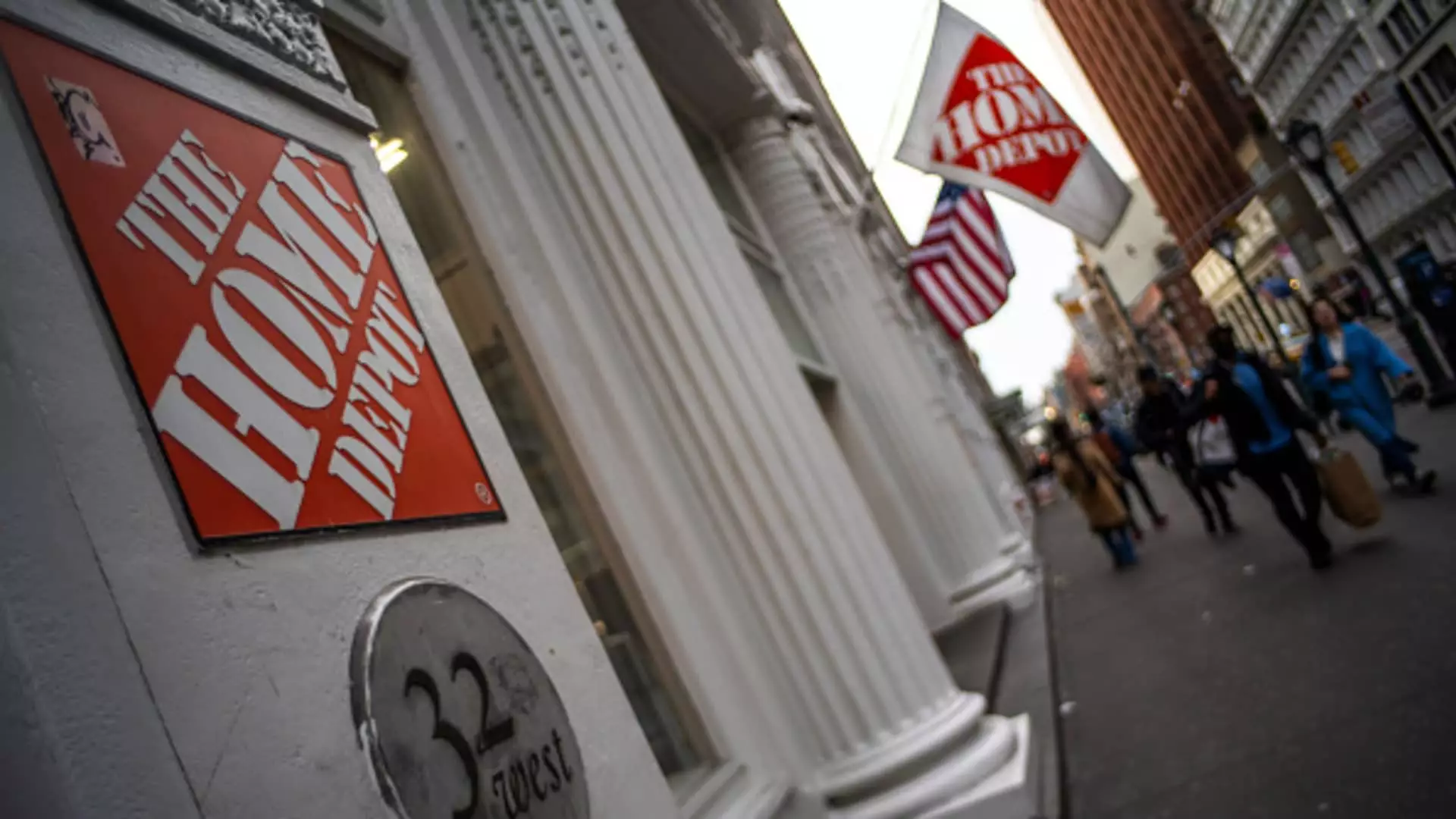In a world riddled with economic instability, the resilience of U.S. contractors, particularly in painting and remodeling, stands out. A recent survey conducted by Morgan Stanley encompassing 94 general contractors and 37 specialty painters reveals a sentiment that leans in favor of optimism among professionals. Despite the wavering housing market and rampant inflation, the majority of these contractors believe business will bounce back. This confidence is epitomized in their project backlogs and their anticipation of an uptick in larger projects as we progress into 2025. It raises the question: Are these indicators merely smoke and mirrors, or do they signal a more profound transformation within the industry?
The contractors’ perspective, steeped in years of experience, underscores a critical advantage for Home Depot, a leading retailer in home improvement. A strong backlog typically signifies not just demand but also trust in the marketplace. These interactions between contractors and their clients may suggest a deeper understanding of the home renovation landscape, where larger projects still reign supreme despite fears of a downturn.
The Tariff Tightrope: Risks and Repercussions
However, not everything appears rosy on the horizon. The specter of material pricing—largely influenced by inflation and ongoing tariff debates—casts a shadow over this otherwise upbeat outlook. According to the survey, tariffs rank as a significant concern, and we must acknowledge that these worries were noted just before the abrupt “Liberation Day announcement,” a moment that has undoubtedly compounded uncertainties in contractor confidence. Home Depot’s response to these challenges, notably their cautious approach to navigating tariff impacts, highlights a crucial point: even market giants must remain agile amid shifting economic winds.
Morgan Stanley’s decision to reduce Home Depot’s stock target from $450 to $410 seems to echo this sentiment of cautious optimism laden with underlying risk. A re-evaluation may be prudent given the fluctuating economic landscape. The apparent disconnect between the robust confidence of contractors and the apprehensive stance of analysts suggests that while the housing market shows flickers of vitality, it is far from stable.
Home Depot’s Strategic Vision in the Face of Challenges
Despite these uncertainties, Home Depot has positioned itself as a pivotal ally for both contractors and everyday consumers. CEO Ted Decker’s assertion that over half of U.S. homes are over 40 years old and in dire need of updates speaks volumes about market potential. Home Depot’s strategy to focus on providing solutions for home upkeep is not merely an act of corporate responsibility but a recognition of opportunity. It acknowledges that homes are not just investments; they are lived experiences that require ongoing maintenance.
Moreover, the company’s push towards serving professional customers signifies an understanding that a dual approach—catering to both DIY enthusiasts and contractors—will fortify its growth strategy. The significant acquisition of SRS Distribution is a testament to this vision, hinting at a calculated approach to capturing a larger market share in professional sales.
The Affirmative Market Signals
The encouraging statistics surrounding mortgage interest rates cannot be overlooked either. With 30-year fixed-rate mortgages dipping below 6.5%, the potential for renewed housing activity presents a strong case for Home Depot’s sales resurgence. If history is any indication, such a threshold could indeed precipitate renewed interest in home renovations, further benefiting retailers entrenched in the home improvement sector.
Investors like Jim Cramer continue to endorse a bullish perspective on Home Depot. His optimism encourages long positions, reflecting a broader confidence that the retailer has the mechanisms in place to weather the economic storm while capitalizing on emerging opportunities. The strategic pivot towards serving professional clients seems prudent; it not only diversifies risk but also positions the company away from being solely dependent on a singular market segment.
The juxtaposition of robust contractor sentiment against a backdrop of economic concerns paints a complex picture for Home Depot. While the mood among painters and remodelers may be buoyant, the shadow of uncertainty from tariffs and inflation looms large. This duality evokes curiosity regarding how Home Depot will navigate these waters.
Ultimately, Home Depot’s trajectory may hinge on its ability to remain agile and pivot as needed. The landscape is evolving, and so too are the demands of customers. As they adapt, Home Depot is poised not just to survive but to thrive, leveraging the inherent value in home maintenance and improvement, thus potentially redefining what success looks like in a challenging economic climate.

